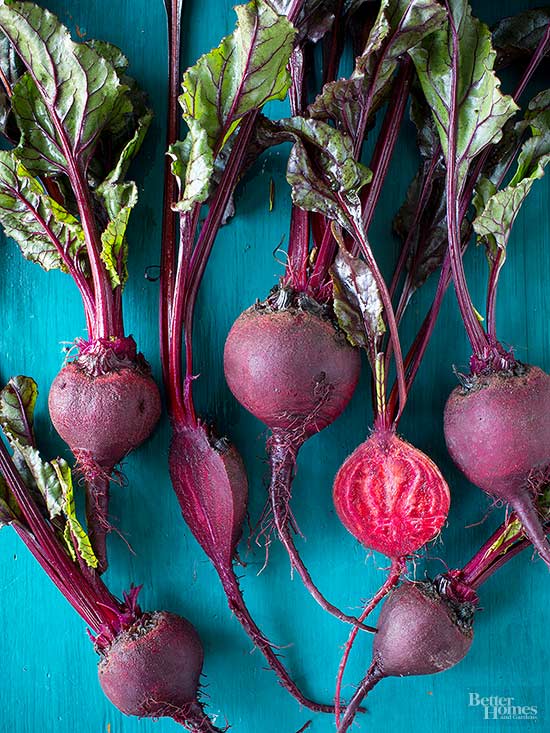






Beets are cool-season crops, although they can handle warm temperatures once they're established. In a full sun location, sow seeds directly into loose, well-drained soil in spring as soon as the ground can be worked. If your soil is wet or full of clay, wait for the soil to dry out and amend your soil with organic matter such as compost. Root crops like beets and carrots grow best when the soil is not compacted.
Sow beet seeds about 1/2 to 1 inch deep and 1 inch apart with rows about 1 foot apart. You can also broadcast -- scatter -- beet seeds into a bed, leaving space between each seed to allow for the beet growth. Beet seeds may have a hard time germinating, so place a light layer of compost over the top, keeping the soil moist but not waterlogged until the seedlings emerge.
Once beet plants start growing, you may notice several growing in the same spot. That's because each seed is actually a fruit containing several seeds. At this point, thin out the weakest seedlings to allow the strong ones to survive. Be careful when pulling out seedlings so that you don't dislodge the roots (the future beets!) of others nearby. To avoid this problem, use a tiny scissors to trim the tops of the ones to thin out.
Use the delicate greens or tiny beetroots in salads, cooked as a side vegetable, or in any dish where you would use spinach or chard.
Once thinning is done, weed removal and weekly watering are your only tasks until harvest.
continue reading belowBeets are at their sweetest and most tender when harvested young. Begin pulling them when the roots are 1 to 2 inches in diameter. Most taste best before they reach 3 inches in diameter.
Garden beets cook quickly. You can steam, boil, or bake them in their jackets like potatoes to serve warm. Baby beets cook very quickly. Add some butter and enjoy! Or chill cooked beets and peel the skins off just before slicing them into salads.
All parts of beet plants are edible. The young green tops are delicious steamed.
Beets are ready to harvest about 50 to 70 days after planting. You can get a second crop of beets if you sow more seeds about 10 weeks before fall frost in your area. Frost damages the beet greens, so plan on harvesting the crop before this happens.
There are dozens of kinds of beets, a fact that may surprise those who think there's only one kind of beet: red. In the red beet category alone, there are many different shapes and sizes, including cylinder-shaped 'Cylindra', tiny 'Babybeet', petite round 'Baby Ball', and 'Bull's Blood', which has the added benefit of gorgeous burgundy leaves that blend beautifully into an ornamental garden.
Many consider Chioggia (pronounced key-OH-gee-uh) beets to be the mildest and sweetest of beet varieties. This beet, with a red skin and lovely concentric rings of white and red inside, hails from northern Italy.
Golden types of beets include 'Gourmet Golden', 'Burpee's Golden', and 'Touchstone Gold'.
For something completely different, try the Dutch heirloom 'Albino', which is as white inside and out as its name indicates.
Pickled Beets
Beet Salad with Orange-Balsamic Dressing
Lemony Beet Tarts
Beet Hummus
Copyright © www.100flowers.win Botanic Garden All Rights Reserved